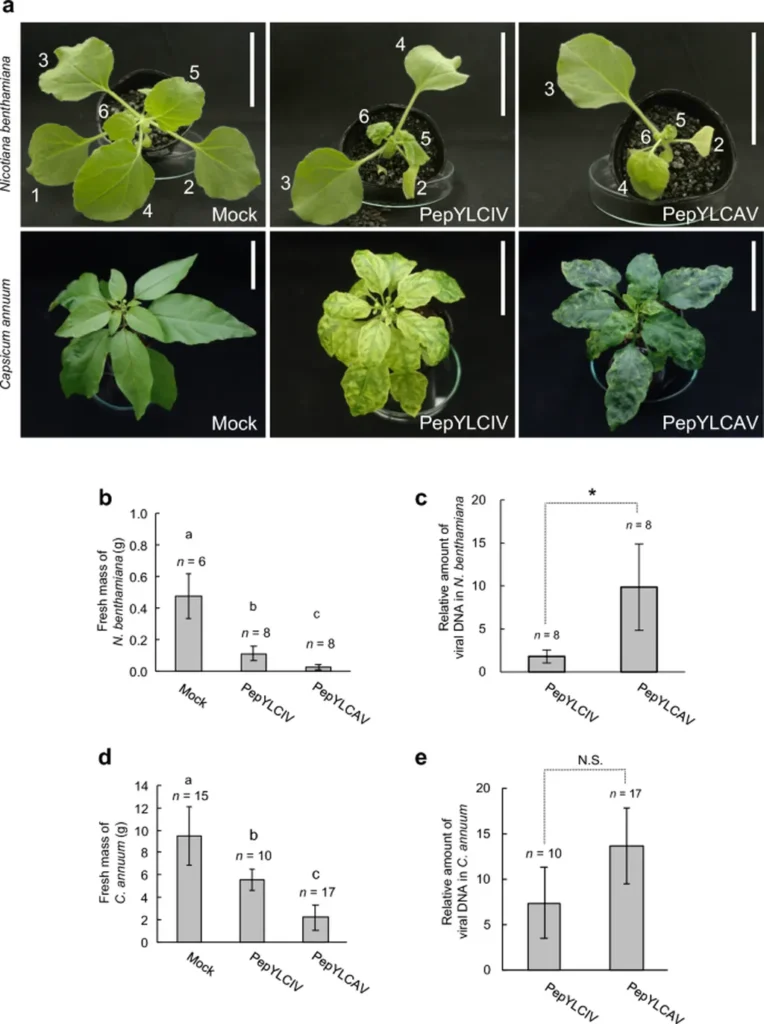In the heart of Indonesia, a silent battle is raging in the fields, one that doesn’t involve humans or machinery, but rather, plants and viruses. A recent study published in the Indonesian Plant Protection Journal (Jurnal Perlindungan Tanaman Indonesia) has shed light on the molecular characterization of two Begomoviruses affecting black-eyed pea and cucumber crops in Sukoharjo and Magelang Regencies. The research, led by Antama Surwadinata from the Department of Plant Protection at Universitas Gadjah Mada, offers crucial insights into the genetic diversity of these viruses and their potential impact on agriculture.
Begomoviruses are a significant threat to various crops worldwide, and Indonesia is no exception. Surwadinata and his team collected symptomatic samples from black-eyed pea and cucumber plants, subjecting them to molecular analysis using specific primer pairs for universal detection of Begomoviruses. The results were conclusive: the black-eyed pea sample was infected with the mungbean yellow mosaic India virus (MYMIV), while both cucumber samples were infected with the tomato leaf curl New Delhi virus (ToLCNDV).
The sequences of partial AV1, and partial AC1 and AC2 genes of the three isolates were registered with accession nos. PQ539469-71 and PQ539476-78, respectively, in NCBI GenBank. “This is the first report of MYMIV in black-eyed pea in Indonesia and ToLCNDV in cucumber in Magelang,” Surwadinata stated, highlighting the significance of their findings.
The study also revealed that the new isolates shared a close genetic relationship with other isolates found in Indonesia, indicating a potential spread of these viruses within the country. The absence of recombination signals in the sequences suggests that the viruses are evolving independently, which could have implications for future disease management strategies.
The commercial impact of these findings cannot be overstated. Cucumbers and black-eyed peas are important crops in Indonesia, contributing significantly to the local economy. The identification and characterization of these viruses are the first steps in developing effective control measures, which could protect the crops and ensure the livelihoods of farmers.
Surwadinata’s research also opens up new avenues for understanding the genetic diversity of Begomoviruses. “By expanding our knowledge of these viruses, we can better prepare for potential outbreaks and develop strategies to mitigate their impact,” he explained. This could involve breeding resistant crop varieties, implementing integrated pest management practices, or even using biotechnology to engineer virus-resistant plants.
The study’s findings are a wake-up call for the agricultural sector, emphasizing the need for vigilance and proactive measures in the face of viral threats. As Surwadinata and his team continue to unravel the complexities of these viruses, their work will undoubtedly shape the future of plant protection in Indonesia and beyond. The publication of this research in the Indonesian Plant Protection Journal (Jurnal Perlindungan Tanaman Indonesia) ensures that these critical insights are accessible to the scientific community and stakeholders, fostering collaboration and innovation in the field.

